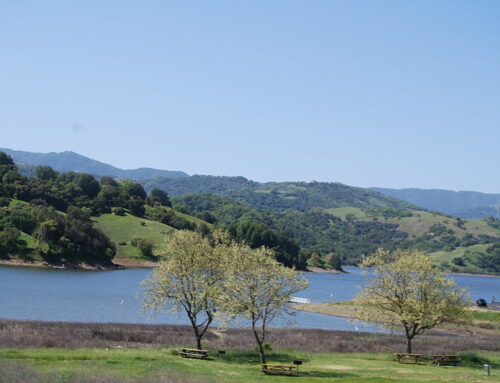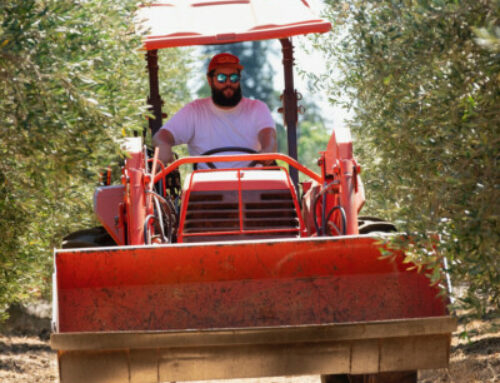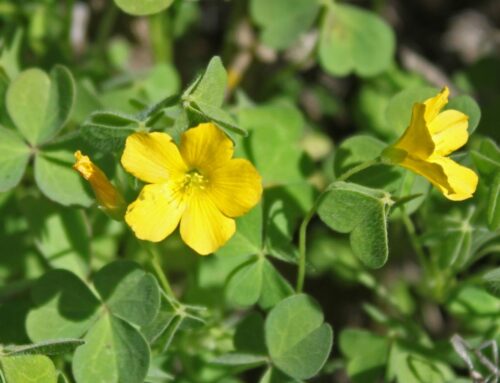South Valley residents can get up to $3,000 to help remove lawns and plant drought-tolerant landscaping
![]()

Photo by Marty Cheek
Bob and Nancy Wells in the front yard of their home. They took advantage of Valley Water’s program to remove their lawn and plant drought-tolerant landscaping.
By Marty Cheek
When Bob and Nancy Wells noticed a neighbor’s newly landscaped drought-tolerant front yard, they were so impressed they asked him about it. They learned Valley Water provides a significant rebate program to help homeowners with the installation cost.
 The couple have lived in Morgan Hill since 1979. In the house they moved into 11 years ago, they found themselves spending up to $110 a month on their water bill, much of which went to keeping green the sod of their front lawn. They eagerly applied for the rebate and made the switch to landscape their home by adding low-water plants growing among gravel, decorative rocks and paver stones. It not only made their ranch style home stand out on their street but saved them money on their water bill, which is now about $95 a month.
The couple have lived in Morgan Hill since 1979. In the house they moved into 11 years ago, they found themselves spending up to $110 a month on their water bill, much of which went to keeping green the sod of their front lawn. They eagerly applied for the rebate and made the switch to landscape their home by adding low-water plants growing among gravel, decorative rocks and paver stones. It not only made their ranch style home stand out on their street but saved them money on their water bill, which is now about $95 a month.
Now the Wells can enjoy hummingbirds buzzing and butterflies fluttering around the flowers of the plants they installed, said Nancy, a retired teacher.
 The process to apply for the rebate was easy, she said. And besides saving money, they also save time on gardening maintenance such as fixing sprinklers and mowing the grass.
The process to apply for the rebate was easy, she said. And besides saving money, they also save time on gardening maintenance such as fixing sprinklers and mowing the grass.
“We got the list of allowed plants and we decided on which ones we wanted,” she said. “We didn’t have a professional landscape designer. We really like the rocks . . . The pretty flowers attract hummingbirds, and we can look out the window and watch them.”
The decision to make the switch to a more environmentally-friendly landscaping was an easy one for the Wells. Weed block fabric helps to minimize the chore of keeping the landscape from dandelions and other unwanted vagrant vegetation.
“From my perspective, the plain lawn was nonfunctional. It didn’t do anything for me,” Bob, a retired engineer, said. “The backyard is a place where we sometimes would play croquet or do something fun. But the front lawn was absolute zero. So we loved the idea of having flowers we could cut and take into the house.”
A Solar Sync controller moderates the amount of water the landscape receives from drip-lines for maximum efficiency. It uses sensors to measure solar radiation, and temperature and rain sensors to irrigate only what the plants need.
John Varela, a Valley Water board director representing South Valley, encourages more homeowners to consider programs to minimize the amount of water they use for landscaping. Homeowners can receive up to $3,000 to install landscaping requiring much less water. Savings can be considerable, with many residents who make the switch finding they can save as much as 35 gallons per square foot a year.
“We’ve learned that more than 50 percent of water use as a resident is in irrigation,” he said. “That’s a huge amount of water. So we created a rebate program, which is extremely popular.”
Commercial properties that qualify can receive up to $50,000 in rebates to switch to a more environmentally-friendly design in their landscaping. Financial savings depends on the water utility supplier and its rates.
California native and low-use water plants from Mediterranean-like environments are the best landscaping vegetation used to a drier climate are the best to install, said Valley Water Conservation Specialist Ashley Shannon. Many people who take advantage of the rebate find they have fun doing their own landscape design, she said.
“We have varying degrees of how people do this. Some people like to do it themselves, some people use a designer,” she said.
One factor participants need to consider is how permeable their land is. Many residents use gravel or mulch to allow water to percolate back into the ground. They also find ways such as drip-lines to achieve low flow irrigation, she said.
“You definitely cut down on the weekly maintenance,” Shannon said. “It’s more a seasonable maintenance with gardens like this.”
In July 2021, Valley Water raised its rebate amount from $1 to $2 a square foot. Money came in part from the Measure S bond as well as a variety of grants. Rebates are available until June 30, or until funds are depleted.
“We are definitely seeing people take advantage of this offer,” Shannon said.
It’s relatively easy to apply for the rebates, she said.
 “We have an online application process. The project definitely requires pre-approval before starting,” she said. “Don’t go ripping out everything right now. We do accept dead lawns, so if someone wants to reduce their irrigation on the ground, that won’t disqualify them.”
“We have an online application process. The project definitely requires pre-approval before starting,” she said. “Don’t go ripping out everything right now. We do accept dead lawns, so if someone wants to reduce their irrigation on the ground, that won’t disqualify them.”
Because of the added funding, Morgan Hill residents seem to be a little more ahead of taking advantage of the rebates compared with Gilroyans.
Landscaping costs might range from $6 to $15 per square foot — depending on the complexity of the design, she said. Valley Water can also provide a list of local professional contractors who have had experience with the program.
 “We’re totally OK with do-it-yourselfers. We get a lot of folks who do the work themselves and take a lot of pride in what they’ve done,” she said. “We focus on the lawn component on our rebate a lot but there are a lot of other components so people can pick and choose and do a lot of different things.”
“We’re totally OK with do-it-yourselfers. We get a lot of folks who do the work themselves and take a lot of pride in what they’ve done,” she said. “We focus on the lawn component on our rebate a lot but there are a lot of other components so people can pick and choose and do a lot of different things.”
Shannon encourages people to apply as soon as possible due to a wait period because they’ve seen a huge spike in participation. There’s a backlog with scheduling appointments for inspectors to check out the homes and Valley Water is trying to catch up with its contractors.
“If a customer is interested and not sure when they want to start, we encourage them to start the process now,” she said. “You’re not really committed to anything until we issue that notice to proceed.”






